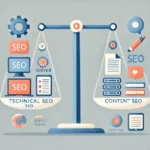In today’s fast-paced digital world, every second counts. If your website is running slow, it can significantly impact your search engine ranking and user experience. Understanding how to fix slow website SEO is crucial for achieving better performance and ensuring that your site meets the standards set by search engines. In this article, we will explore various strategies to enhance your website speed and optimize your SEO.

Understanding the Importance of Website Speed
Website speed plays a vital role in SEO. A slow website can lead to higher bounce rates, lower user engagement, and poor conversion rates. Google’s algorithms consider site speed as one of the ranking factors. Therefore, knowing how to fix slow website SEO can directly improve your search engine rankings. Additionally, a fast website enhances the user experience, leading to higher satisfaction and return visits.
Identifying Common Causes of Slow Website Speed
Large Images and Media Files
Large images and media files are common culprits of slow website speed. Optimizing these files can significantly reduce load times. Consider compressing images without losing quality and using next-gen formats like WebP for better performance.
Excessive HTTP Requests
Each element on your webpage, such as images, scripts, and stylesheets, generates an HTTP request. Too many requests can slow down your site. Minimize HTTP requests by combining files, using CSS sprites, and removing unnecessary elements.
Poor Server Response Time
A slow server response time can be detrimental to your website speed. Choose a reliable hosting provider and ensure your server is configured correctly to handle your website traffic efficiently.
Effective Strategies to Improve Website Speed
Enable Browser Caching
Browser caching stores static files on a visitor’s device, reducing the need to reload the page entirely on subsequent visits. This significantly speeds up load times for returning visitors.
Optimize CSS and JavaScript
Minify CSS and JavaScript files to reduce their size and improve load times. Tools like UglifyJS and CSSNano can help simplify this process.
Use a Content Delivery Network (CDN)
A CDN stores copies of your site on servers worldwide, ensuring that users load your site from the nearest location. This reduces latency and boosts page speed.
Implement Lazy Loading
Lazy loading defers the loading of images and media files until they are needed, reducing initial load times and improving user experience.
Tools to Analyze and Monitor Website Speed
Google PageSpeed Insights
Google PageSpeed Insights provides detailed insights into your website’s performance and offers suggestions for improvement. Utilize these insights to make informed decisions about optimizing your site.
GTmetrix
GTmetrix analyzes your website’s speed and provides a comprehensive report on various performance metrics, helping you identify areas of improvement.
Pingdom
Pingdom offers real-time monitoring of your website’s speed and performance, alerting you to any issues that arise.
Advanced Techniques for SEO Optimization
Schema Markup
Implementing schema markup helps search engines understand your site’s content better, potentially improving your rankings and click-through rates.
Optimize Meta Tags and Descriptions
Ensure your meta tags and descriptions are concise, relevant, and include target keywords to improve your site’s visibility in search results.
Improve Mobile Responsiveness
With mobile traffic increasing, ensuring your website is mobile-friendly is crucial for SEO. Use responsive design and test your site on various devices to ensure optimal performance.
Regular Maintenance and Updates
Regularly updating your website’s software, plugins, and themes ensures it remains secure and performs optimally. Outdated software can slow down your site and expose it to security vulnerabilities.
Conclusion
Knowing how to fix slow website SEO is essential for maintaining a competitive edge in today’s digital landscape. By understanding the factors contributing to slow website speed and implementing the strategies outlined in this article, you can significantly enhance your site’s performance and SEO.

FAQs
Why is my website loading slowly?
Slow website loading can be caused by large images, excessive HTTP requests, poor server response time, and outdated software.
How can I improve my website’s speed?
Improve your website’s speed by optimizing images, enabling browser caching, minifying CSS and JavaScript, and using a CDN.
What tools can help analyze my website’s speed?
Google PageSpeed Insights, GTmetrix, and Pingdom are popular tools for analyzing website speed and performance.
For more detailed insights on optimizing your website, visit audit technical SEO and explore best practices for SEO.
For additional guidance, check out this comprehensive SEO checklist to ensure your site meets all necessary criteria for optimal performance.







